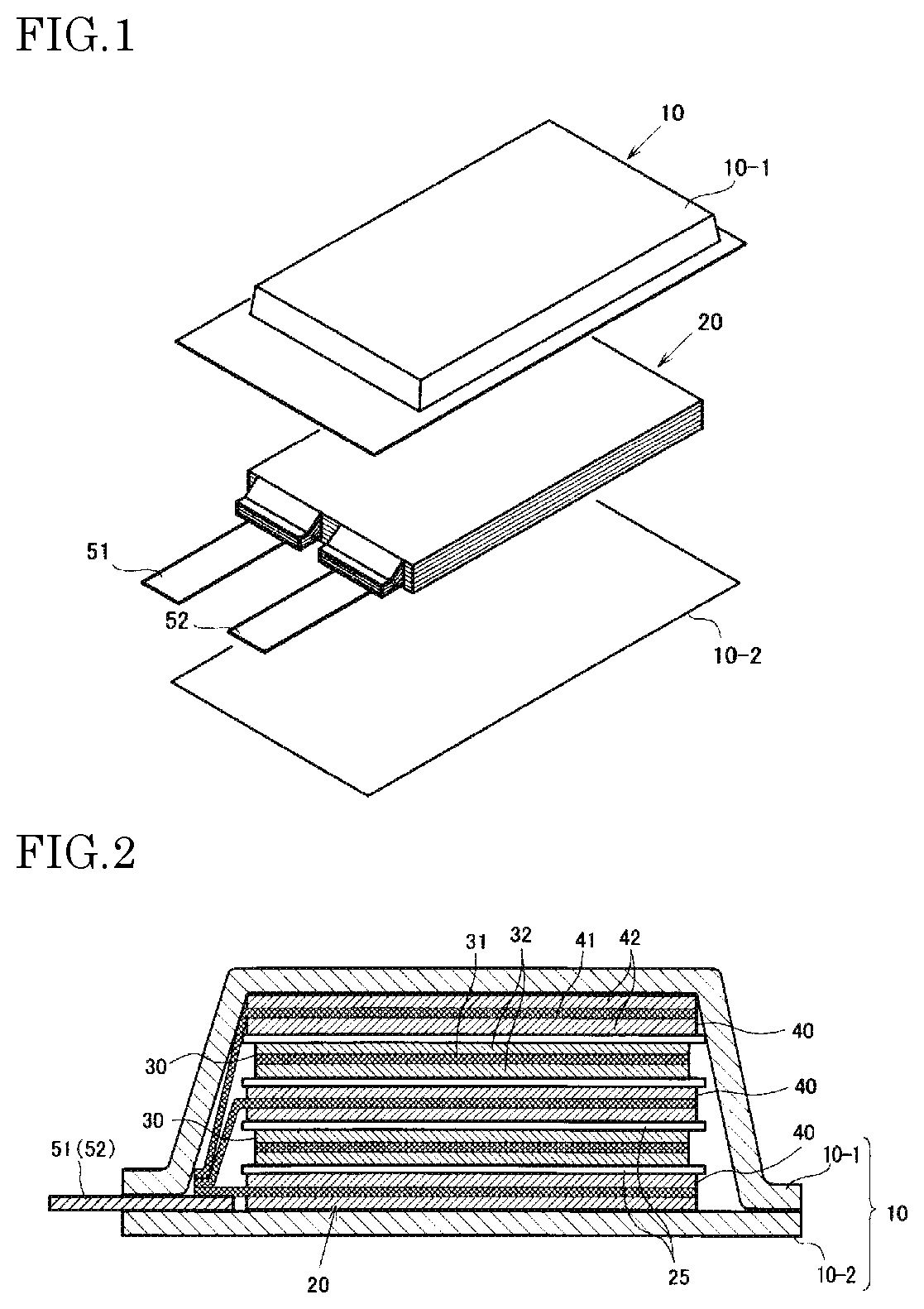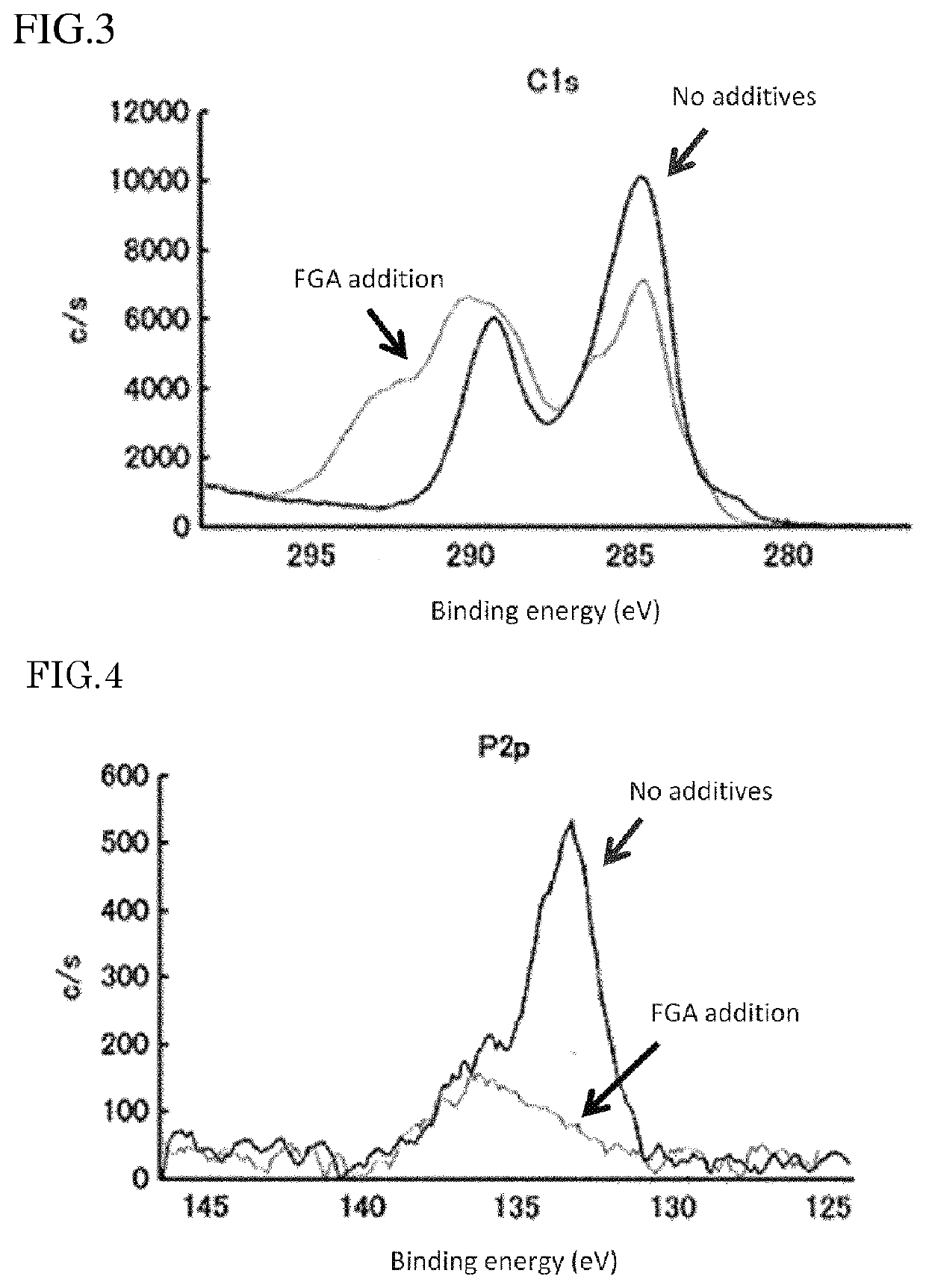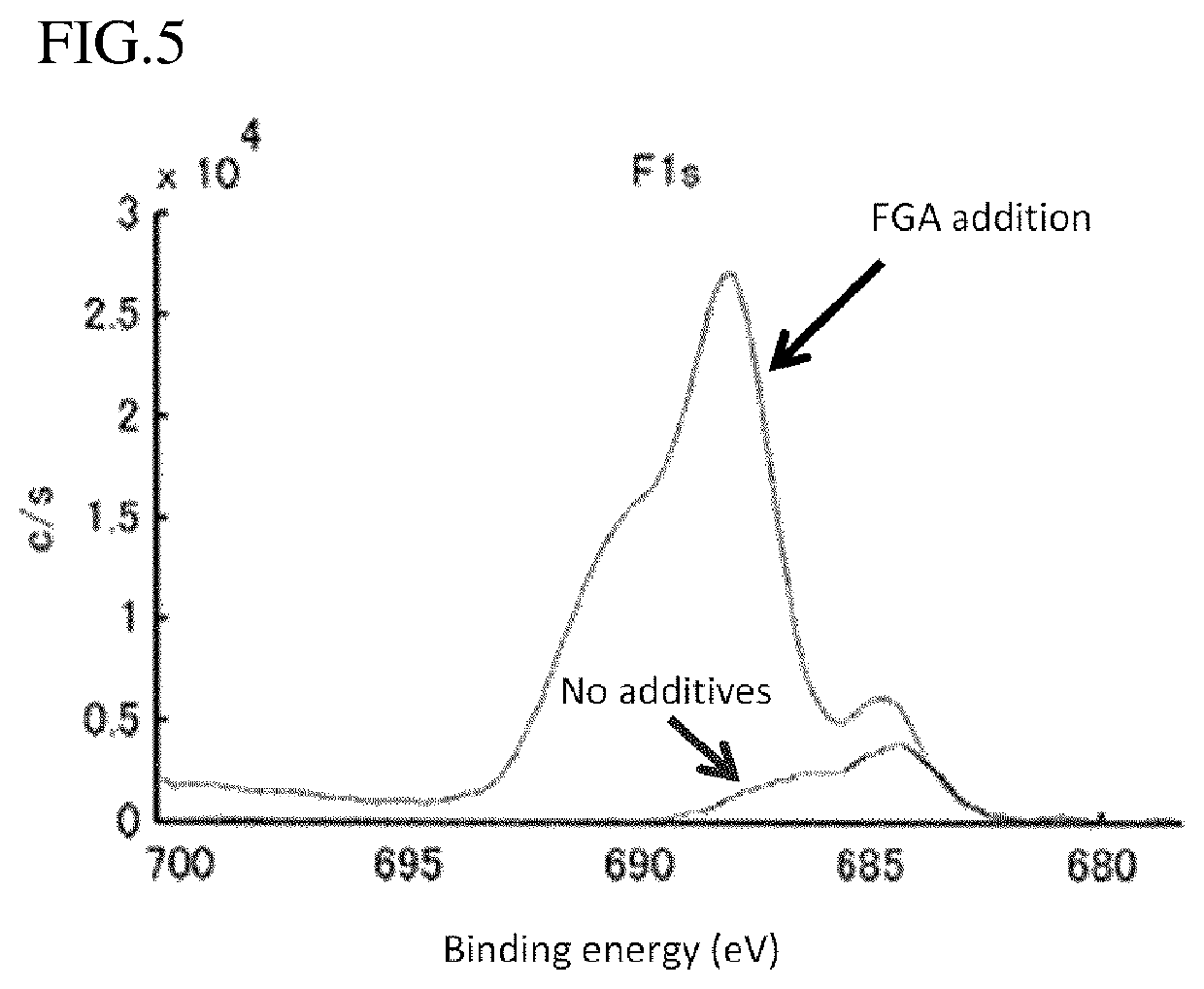Lithium ion secondary battery
- Summary
- Abstract
- Description
- Claims
- Application Information
AI Technical Summary
Benefits of technology
Problems solved by technology
Method used
Image
Examples
example 1
[0094]A silicon oxide having a carbon coating (weight ratio: silicon oxide / carbon=95 / 5) was used as a negative electrode active material. Hereinafter, this silicon oxide having a carbon coating will be simply referred to as silicon oxide or SiO. 90 weight % of the negative electrode active material, 1 weight % of acetylene black as a conductive assisting agent, and 9 weight % of a copolyacrylic acid comprising a monomer unit derived from acrylic acid sodium salt as a negative electrode binder were mixed, and then water was added thereto to prepare a negative electrode slurry. This was applied to both surfaces of a 10 μm-thick copper foil that is a current collector, dried at 80° C. for 5 minutes and subjected to a pressing process to produce a negative electrode. Herein, the weight % of each material means a percentage with respect to the total amount of the negative electrode active material, the conductive assisting agent and the binder.
[0095]Li(Ni0.8Co0.15Al0.05)O2 was used as a ...
example 2
[0102]The silicon oxide and natural graphite (weight ratio: silicon oxide / natural graphite=70 / 30) were used as negative electrode active materials. The others were as in Example 1.
PUM
 Login to View More
Login to View More Abstract
Description
Claims
Application Information
 Login to View More
Login to View More - R&D
- Intellectual Property
- Life Sciences
- Materials
- Tech Scout
- Unparalleled Data Quality
- Higher Quality Content
- 60% Fewer Hallucinations
Browse by: Latest US Patents, China's latest patents, Technical Efficacy Thesaurus, Application Domain, Technology Topic, Popular Technical Reports.
© 2025 PatSnap. All rights reserved.Legal|Privacy policy|Modern Slavery Act Transparency Statement|Sitemap|About US| Contact US: help@patsnap.com



